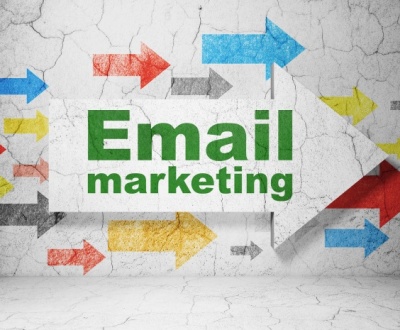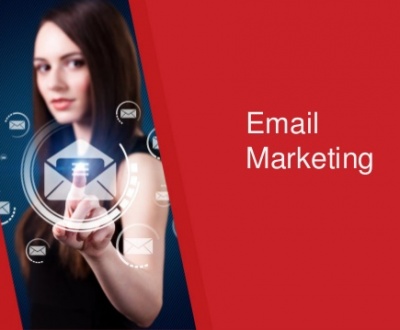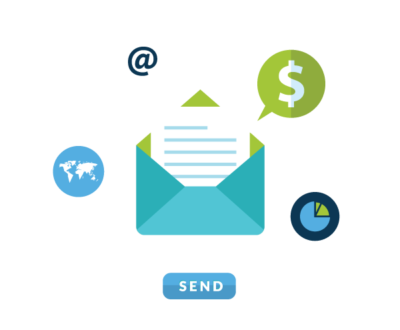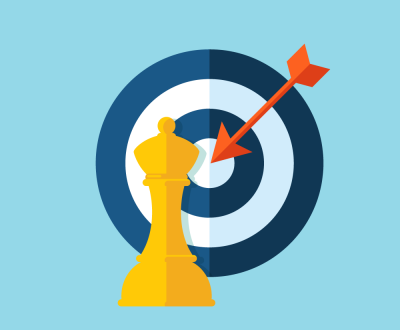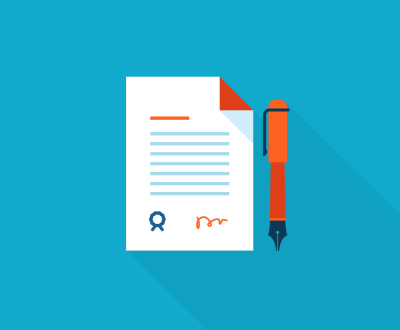8 Tips for a Successful Email
Remember the times when you shared email chains with friends? You could almost guarantee a 100% open rate in the 1990s. So what happened?
Well, social media happened. When it emerged ten years ago, and it’s still young, email had to reinvent itself to stay relevant. It became less about chains and more about customers.
Despite social media showing no signs of ever letting up, email continues to be an effective way of talking with customers and increasing sales. Easy to test and optimize, it’s a highly versatile tool. So if you want better open rates, click-throughs, and conversions, then keep reading.
We’re going to share eight of 2019’s best email marketing strategies so you can cut through all the noise.
- Define Your Audience
Defining your audience is an important first step when starting a new business. It goes without saying that without customers, you cannot grow or make sales. For this article, your “audience” is anyone interested in what you have to say. It could be someone who has signed up to your subscriber list, follows you on social media, or has performed a Google search on your business.
Let’s say you’ve created a yoga apparel website. Firstly, it will help if you target people who love fitness above everything else. A yoga audience is likely to prioritize their health, whether that’s eating fresh fruit, mediating, or doing lots of sports. Yoga fans are often well-educated women, who aren’t scared of expressing themselves in fitness-friendly clothes. Age groups may vary, but younger ones are more likely to show off on Instagram than older generations.
Once you’ve identified the groups you want to target, you have to send them relevant content. Remember, you receive marketing emails from companies too. Ask yourself why you signed up to these emails, and what you like about them.
- Prioritize Active Users
If you’re starting a new business and don’t have an audience yet, then add a mailing list subscription to your website. Prioritize active users over numbers at this point. Racking up thousands of subscriptions might boost your stats, but bots don’t read or buy anything—humans do.
Your immediate goal is to have an engaged audience—a subscriber group that opens your emails and clicks on your links. MailChimp, Aweber, Infusionsoft, and other email service providers will help you with subscriber lists.
One way to get more subscribers is to offer people an incentive to sign up. It could be a competition, exclusive content, a sales discount—it depends on your business. If you’re on social, then why not run a Facebook campaign to find new customers and get their email addresses? The more you know about them, the more attractive your campaign will be.
If you have a mailing list already, then every month or so, check and see if the email addresses are active. People often sign up to mailing lists with an alternative address and never check them. If you’re emailing dead accounts, then you risk becoming spam.
Emailing invalid addresses can lead to your domains and delivery IP addresses going on the ‘blacklist.’ Make sure to use email verification services, such as Kickbox and QuickEmailVerification, which will help you avoid this scenario, and keep your mailing list fresh.
- Engage with Your Customers
Having conversations with customers is very important when you’re starting out in business. Even if the numbers are small at first, maintaining real connections with people will improve your open rates over time.
Getting your customer’s attention is a top priority when you run an email campaign. If you don’t stimulate them with exciting content, you risk undermining your business. In 2019, customers are longing for authentic and evocative voices. They want emails they can relate to on a human level.
So every time you send a tailored email campaign for your audience, your delivery rate should go up.
Writing killer subject lines
Attention-grabbing subject lines are critical for open rates. If the wording is boring or poorly composed, why would anyone click to find out what you have to say? You may want to A/B test your subject lines to see which ones appeal to your audience.
Keep your subject lines short and sweet, and lead with a verb. To get a feel for subject lines, go through your email account and see what promotional sends made you click, and ask yourself why? There are many techniques you can use to stir interest amongst your subscribers.
Benefit-driven subject lines will catch people’s attention as you’re showing what’s in it for them. These may include ‘free shipping’ or ‘20% off’. Urgency-driven ones can help evoke FOMO (Fear of Missing Out), which are two of the most potent psychological triggers you can use to boost open rates.
Remember when you are writing them, that you subscribe to emails as well. You feeling something is what makes a top subject line.
- Segment Your Audience
Segmenting your email lists will allow you to organize your audience groups and tailor your content for them. MailChimp found that whenever their users curate their emails lists according to location and occupation, open rates increased by nearly 19%, and click-through rates by almost 22%, compared to campaigns that go out to everyone.
If you’re an organic grocery store in San Francisco, you might want to tailor your content for meat eaters and vegetarians in the Bay Area. A dog owning blogger from London will want to curate their lists to Londoners who love pets and walking.
If you tailor your emails for specific groups, it will help you improve your open rates in the long run. You will also boost your delivery reputation by sending to active subscribers. The more open rates you receive, the more respected your email address will be.
Why A/B testing is crucial
It’s essential that you research and understand your audience (gender, age range, location, and occupation) before you write to them. One way of getting to know your audience is to run some A/B tests, so you can see whether they like your content or not.
You can test to see whether they like specific colors or font sizes. By finding out what your audience wants, you will discover which formats resonate with your audience—some may prefer newsletters over blog stories, or videos over text. Finding out their preferences will be enormously helpful to your business.
Depending on where your audience lives, there are time zone issues to consider before sending. You don’t want to be sending out emails to customers at 3 am. By segmenting your audiences into relevant groups and testing what content they like, you will improve your open rates.
- Personalize Your Campaigns
Delivering personalized content is essential if you want an emotional bond with customers. If you want to connect with people, then make sure to include their name in the subject line and copy.
Your subscribers will like it you to refer and talk to them like a friend. That’s why emails with personalized subject lines are 26% more likely to be opened than nameless ones.
Also, if you have the capability, then personalizing your images according to your audience’s location will make them feel more at home. If you know where your customers live, you can entice them with offers and discounts, so your chances of engagement are likely to increase.
- Optimize Your Emails for Mobile
With up to 60% of email campaigns being opened on a smartphone device, you simply have to customize your email for mobile. No one is going to pinch and squeeze their smartphone if your email is sent in a desktop format. People no longer have the time.
If you want to send a mobile-friendly content to customers, then pick a mailing list provider such as MailChimp or Constant Contact. Both have mobile-friendly templates you can use for email, and you can even create mobile-friendly sign-up forms for your site, which will help you entice even more subscribers.
When it comes to writing for mobile, your subject lines need to be shorter than you can read on desktop—under 40 characters, so it works for every smartphone. The same goes for the body copy. Be succinct when you write your emails. Use short sentences and easy-to-consume paragraphs.
Your emails will benefit from having a larger font when it’s being viewed on a smaller screen, so less is more here. Don’t forget, your call-to-action (CTA) button must be bright and beautiful.
- Implement a Nurture Sequence
A nurture sequence is a sales funnel—or in plain English, a series of emails you send to every new subscriber to ‘nurture’ them. You can set up them up to persuade existing subscribers to take specific actions, such as buying a product during a Black Friday promotion.
A nurture sequence helps you form sequential relationships with your audience. It informs them of your services and showcases your expertise, so you can convert them into paying customers. By nurturing them you can introduce new subscribers to your business — so they understand who you are, what you do, and why they should care.
In practice, this can mean writing your ‘welcome emails’ once, setting them up, and whenever anyone joins your list will automatically receive them. Using a mailing list provider such as MailChimp will help you craft nurture sequence series, which goes out to subscribers once you’ve connected.
If you set this process up effectively, it will take away the labor-intensive elements of writing and responding to emails, so you can focus on growing your business.
- How to ‘Win Back’ Bored Customers
What happens when your customers stop reading your emails? With so many online distractions available, over time, people’s interest in your business may wander. If you want to get them back, you need to send them a re-engagement email.
While you may have lost their attention, the good thing is that initially, they liked what you had to say. These customers signed up to your business because you were interesting and relevant to their lives. By reminding them of your value, you have a chance of getting their attention once again.
‘Win-back’ email subject lines can stir the passions if written correctly. Your subscribers have to feel curious enough to open your emails again, so this is probably your last chance of getting their attention. Don’t be shy or cautious. You have nothing to lose at this point.
Make sure you A/B test your subject lines until you find a winner which works for them. When you are happy with the results, you can win back dormant subscribers and remind them why they signed up in the first place.
Summing Up
With new apps popping up every month, it’s reassuring to know that email remains a reliable way to generate new business. Over the past ten years, it has adapted to change, introducing mobile-friendly templates and audience segmentation techniques.
As we approach the 2020s, modern audiences want fresh and inspirational emails from businesses, which feel warm and evocative, almost like a friend wrote it. Email campaigns can produce tremendous results if you deliver engaging content for users.
Unlike fifteen years ago, the marketing world is fragmented, so you must segment your audiences to be successful. If you’re willing to adapt to change and follow our tips, your open and click rates will increase over time. Helping you forge long-standing bonds with customers and boost your sales, not only in 2019 but for many years to come.
This is author biographical info, that can be used to tell more about you, your iterests, background and experience. You can change it on Admin > Users > Your Profile > Biographical Info page."
About us and this blog
We are a digital marketing company with a focus on helping our customers achieve great results across several key areas.
Request a free quote
We offer professional SEO services that help websites increase their organic search score drastically in order to compete for the highest rankings even when it comes to highly competitive keywords.
Subscribe to our newsletter!
Recent Posts
- 8 Tips for a Successful Email July 9, 2019
- 3 Things your email Marketing strategy could be missing June 13, 2019
- Email Marketing Tips May 21, 2019

